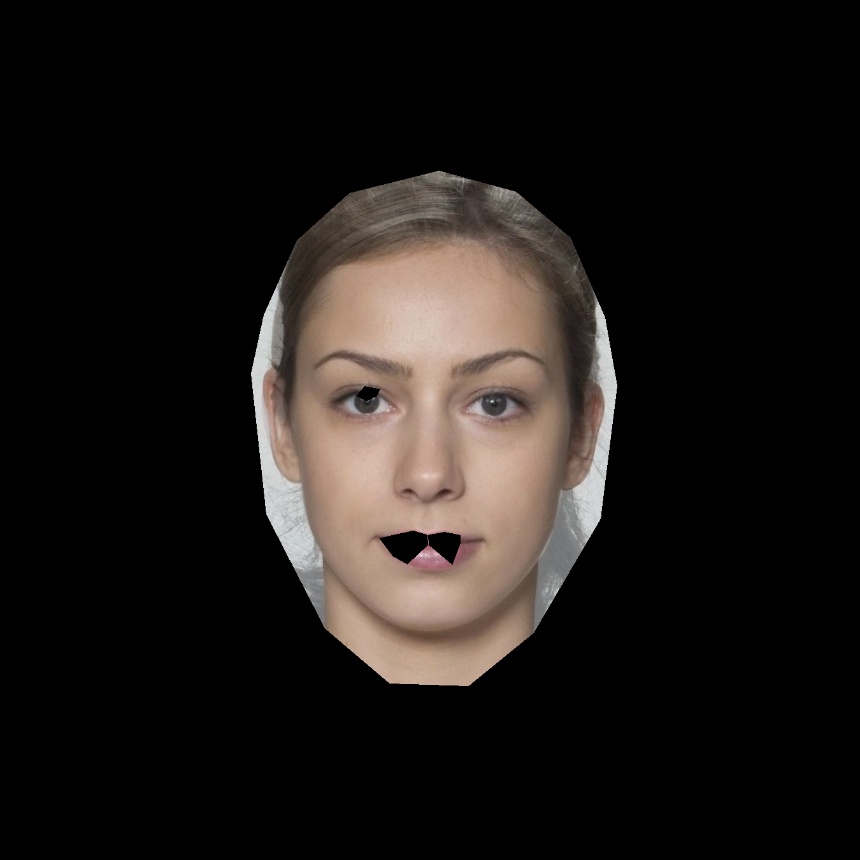It seems the triangulation on the first image was correct, but not the second one .
By creating a new rect2 and subdiv2 to parse into calculateDelaunayTriangles(rect2, subdiv2, points2, img2_copy, win_delaunay, (255, 255, 255), draw=True), I was able to get the correct triangulation on the 2nd image.


Now the list returned by calculateDelaunayTriangles with both sets of inputs (rect & subdiv, and rect2 & subdiv2) and the list returned by subdiv.getTriangleList() seems to be both different:
triangleList 353
triangleList 359
delaunayTri 1: 331
delaunayTri 2: 351The final morphed image is thus still incomplete:




Hello,
I am trying to morph 2 images from the London Face Dataset. This dataset has usually 189 landmarks included as
.temfiles, which I'm able to read inreadPoints.However, at the end the final morphed image still has a few black spots on the given face, which also still cropped and surrounded by black rather than the original background.
Can someone tell me where I'm going wrong ? I follow pretty much the same code as FaceMorph.py. Problem seems to come from the length of the calculated Delaunay Triangles, but I do go through all of it's points.
Here are the original 2 images, with and without




--
My modified faceMorph.py: